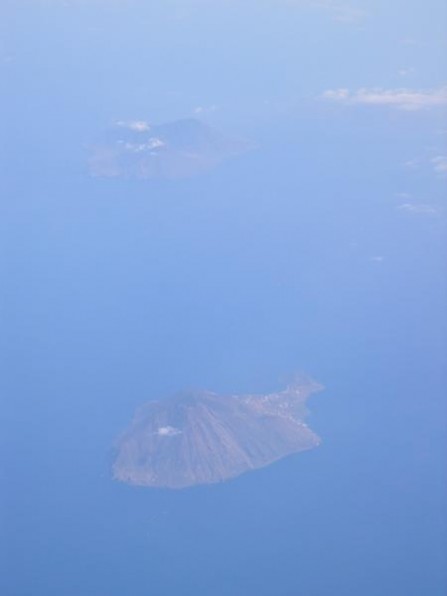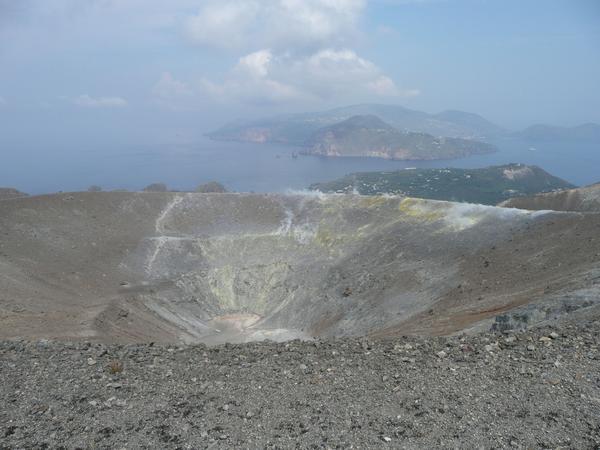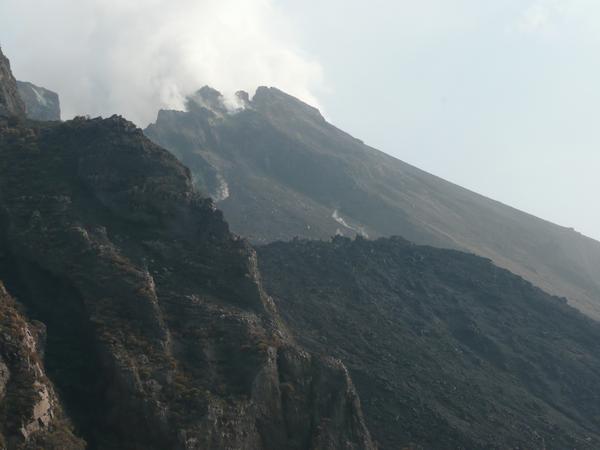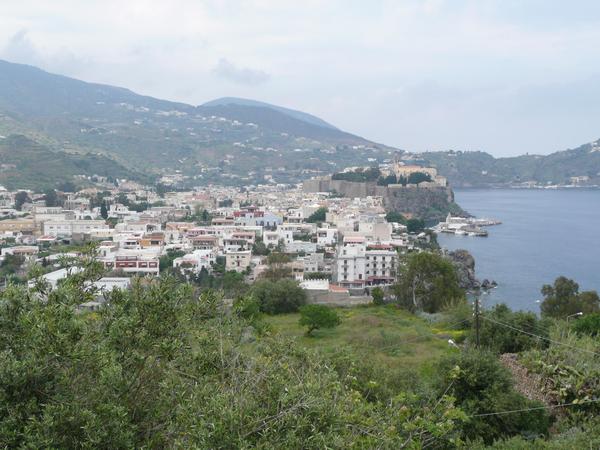Aeolian Islands (Isole Eolie)

The Aeolian or Liparaean islands are a group of seven islands north of the Sicilian city Messina. Their ancient names (and their modern equivalents) are:
- Lipara (Lipari)
- Strongyle (Stromboli)
- Hiera (Vulcano)
- Didyme (Salina; picture, background)
- Euonymos (Panarea)
- Erikussa (Alicudi)
- Phoinikussa (Filicudi; picture, foreground)

Because there is permanent volcanic activity on the islands of Strongyle/Stromboli and Vulcano/Hiera, the ancients believed that these isles gave access to the workshop of Hephaestus or Vulcanus, the protector god of the smiths. The name of the archipelago, however, linked the islands to Aeolus, the god of wind and storm. According to Homer's Odyssey, Aeolus tried to help Odysseus return home.

The islands produced obsidian and were used as Greek settlements along the road to Etruria as early as the Late Bronze age. Mycenaean ceramics have been found on several places.
It appears that in the Archaic age, only the main island, Lipara, was occupied; Greeks from Cnidus founded a colony in c.600. Later, the Liparans also lived on the other islands, except for Hiera, which was too rich in sulfur to be a pleasant place to live. This sulfur, however, contributed to the wealth of the islands, because it could be exported.

The Athenians (in 427 BCE) and Carthaginians have attempted to conquer the islands, but Lipara, which was sometimes a pirates' nest, more or less retained its independence. The Roman historian Livy tells a story about the pious behavior of its inhabitants in 394 VC.note In 252 BCE, during the First Punic War, the Romans occupied the archipelago. It became a normal part of the Roman Empire, with normal facilities like an amphitheater. Exiles were sometimes sent to these islands (e.g., Plautilla).